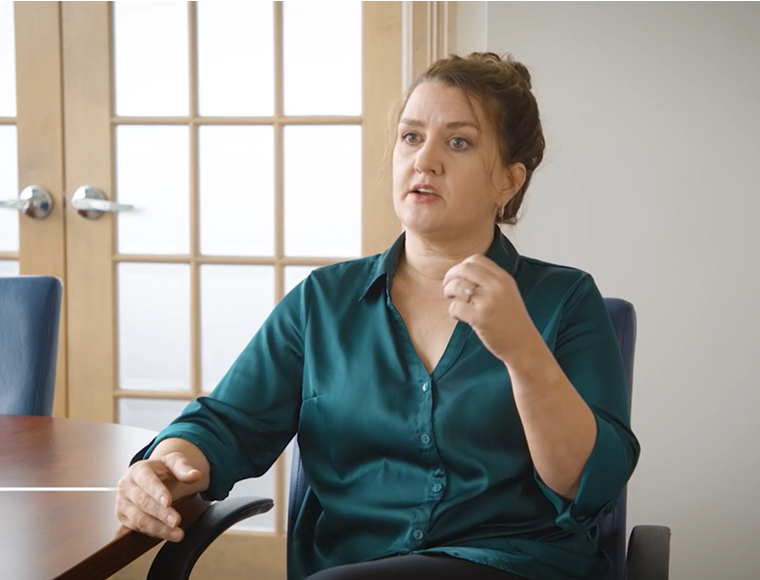Maintaining critical technology-related flexibilities in Medicaid post-PHE
The COVID-19 Public Health Emergency (PHE) catalyzed a rapid transformation in health care delivery, driven by the imperative to minimize virus exposure while ensuring access to care. As the need arose, the industry responded, bolstered by state and federal regulatory mechanisms such as emergency authority waivers, executive orders and legislative actions that cut through red tape and fostered an environment conducive to the swift adoption of tech-forward initiatives.1
The integration of technology has undeniably benefited many aspects of our lives, including health care. In Medicaid, tech-related flexibilities ushered in numerous advancements in expanding access to coverage, improving consumer engagement and strengthening access to care. Although the PHE has ended, many of these widely enjoyed flexibilities should be made permanent.
Flexibilities that support access to coverage
During the PHE, states received a temporary 6.2% increase in the Federal Medical Assistance Percentage (FMAP) under the Families First Coronavirus Response Act (FFCRA). As a condition for this increase, states were required to maintain continuous enrollment for nearly all Medicaid enrollees. With the end of the PHE, states are no longer required to provide continuous enrollment and have resumed normal operations, including eligibility renewals and terminations.
However, many states have adopted policies to extend coverage for specific populations such as children as well as pregnant and justice-involved individuals. These are positive steps, but states should consider expanding continuous eligibility to additional groups, such as the Long-Term Services and Supports (LTSS) population. This group typically qualifies for Medicaid due to categorical eligibility, and while financial thresholds remain, their income fluctuations are minimal, yet their need for Medicaid remains high.
Additionally, states are now required to first attempt an automated, or ex-parte, renewal by analyzing available data to verify eligibility before asking enrollees to complete a renewal form.2 Ex-parte renewals reduce the administrative burden on both enrollees and Medicaid staff, lowering the risk of individuals losing coverage due to missed or incomplete paperwork. During the unwinding process, 55% of individuals had their coverage renewed automatically via ex-parte renewal. The goal should be to continue increasing the number of individuals who have their coverage renewed through this automated process.
Flexibilities to support consumer engagement
With the expiration of the PHE, some flexibilities granted to states through emergency authority waivers that improved consumer experience and engagement are becoming more restrictive. This includes the ability of MCOs to conduct outreach for Medicaid renewals, engage through digital and telephonic methods and for states to utilize streamlined eligibility processes like self-attestation of income without requiring documentation.
The Telephone Consumer Protection Act (TCPA) mandates that MCOs obtain explicit written or verbal consent before making automated calls or sending texts to members. With limited methods available to capture consent effectively, especially for members who do not visit their providers at all, MCOs often rely on live agents and manual dialing, leading to inefficiencies and higher operational costs.
Allowing MCOs to continue outreach for renewals using modern communication methods (texts, automated calls) with implied consent beyond the redetermination period would streamline the renewal process long-term. High response rates to texting suggest that care coordination would also improve if plans could reach members via text with implied consent to share information such as provider networks or benefits.
Additionally, enabling bi-directional communication between health plans and members, including clinical communication while complying with HIPAA regulations, would enhance care coordination further. MCOs would be prohibited from conducting marketing outreach without prior express consent, and members would retain the ability to opt out. However, key information could be shared more easily with existing members if the regulatory framework was modernized.
As an alternative to implied consent for digital engagement, states should be encouraged to obtain member consent during the application process and share that consent with health plans through the 834 file.
Flexibilities to support access to care
Similarly, federal telehealth flexibilities that were stood up during the PHE are set to expire at the end of this year. While states can establish their own telehealth laws, federal decisions have a significant impact across the sector. For instance, there is considerable attention on actions by the DEA surrounding virtual substance use treatment options that allow for prescribing controlled substances.
Telehealth has been a valuable tool for expanding care, benefiting both patients and providers. Increased use of telehealth in recent years has improved outcomes in mental health, chronic conditions and quality of care for underserved populations. Telemedicine enhances access to mental health services, reduces stigma and allows patients to seek treatment from home.3 Additionally, telehealth improves medication adherence, clinical outcomes and dietary habits.4 It enables care for individuals who were previously difficult to reach and reduces the burden on providers in high-demand areas. By allowing providers to care for patients virtually in regions with provider shortages, telehealth has increased access to care and eased the workload for health care professionals.
It is crucial to make certain telehealth flexibilities permanent to maintain the progress in access to care. These include allowing members to be seen from their homes, permitting providers to use audio-only consultations, enabling virtual prescriptions of controlled substances without requiring in-person visits and allowing MCOs to count telehealth visits toward network adequacy standards. Without these provisions, we risk reversing the gains made in access to care, potentially leaving many Medicaid members without the essential services they need.
Challenges in maintaining flexibilities
The challenges can be categorized into three main areas:
First, resource limitations such as financial constraints, workforce shortages and lack of time often deprioritize technology and innovative approaches. Much like in our daily lives, when we are constantly addressing immediate issues, it becomes difficult to focus on creative solutions.
Second, the inertia of habit presents a significant barrier. Resistance to change, skepticism about the effectiveness of new methods and undervaluing technology are common issues. Technology is at times treated as an afterthought in health care, rather than a foundational element.
Third, fragmented technology integration across states poses a major challenge. Standardization is crucial in our increasingly connected world. New rules, like the Interoperability and Prior Authorization Final Rule, aim to address this. However, if states deviate from guidelines and timelines, it leads to further fragmentation rather than achieving the intended standardization and comparability.
Recommendations
It is important that we continue to make progress and leverage technology long after the PHE has ended. We should preserve the flexibilities that support coverage, consumer engagement and access to care.
Beyond maintaining these flexibilities, the pandemic highlighted the need for strategic investments in modernized technology systems that can integrate with new technologies. Such systems can improve accuracy, timeliness, ease of information updates, cost savings and outcomes. For example, real-time eligibility and enrollment information should flow seamlessly from states to MCOs and Medicaid members, just as it does in other sectors. However, this remains impossible due to the limitations of current systems. Relying on temporary fixes for outdated systems only adds to inefficiencies.
Modernizing state systems is essential. Federal Financial Participation (FFP) covers 90% of the costs for the design, development, or installation of new systems, and 75% for their operation and maintenance. However, MCOs need to be involved in technology-related discussions alongside state and vendor partners from the outset. MCOs can provide valuable insights into downstream impacts and potential pitfalls, which can save states time and money that would otherwise be spent on change requests, unnecessary fixes and system failures that ultimately harm members. As delegates of the state, MCOs must be included in these conversations to ensure that outcomes are aligned and cohesive.
By harnessing the potential of modern technology and integrating flexibilities relevant to current realities, we can collectively make progress in improving the patient experience, enhancing population health, reducing health care costs, ensuring clinician well-being and promoting health equity.
Additional policy considerations published by Medicaid Health Plans of America can further guide continued advocacy efforts.5
Sources
- https://www.hhs.gov/about/news/2023/05/09/fact-sheet-end-of-the-covid-19-public-health-emergency.html
- https://www.kff.org/policy-watch/understanding-medicaid-ex-parte-renewals-during-the-unwinding/
- https://www.ncbi.nlm.nih.gov/pmc/articles/PMC8294826/
- https://www.cdc.gov
- https://medicaidplans.org/policy-papers/











